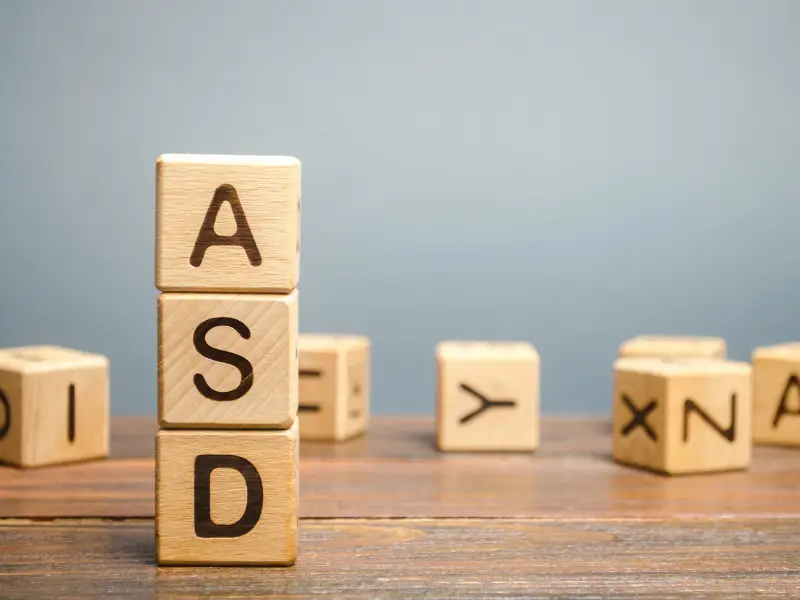When speaking about autism, it is often asked whether it is considered a disability. The answer to that question is subjective and dependent on various factors. At its core, autism is a neurological condition that involves differences in communication, social interactions, and sensory preferences. However, autism is also characterized by unique strengths and abilities, such as excellent attention to detail and pattern recognition.
In this article, we will explore the perspectives on autism as a disability. We will examine the impact of autism on daily life, legal and societal considerations, and the empowerment and support available for individuals with autism. Through our discussion, we hope to provide a more nuanced understanding of autism as a diverse condition and promote greater awareness and acceptance of individuals with autism.
I.Understanding Autism
According to the Diagnostic and Statistical Manual of Mental Disorders (DSM-5), autism spectrum disorder (ASD) is a neurodevelopmental condition that affects communication, social interaction, and behavior. Individuals with autism display a range of symptoms and behaviors, including:
• Difficulties with verbal and nonverbal communication
• Challenges in developing and maintaining relationships
• Limited interests and repetitive behaviors
• Hypersensitivity or hyposensitivity to sensory stimuli
Autism is a spectrum condition, which means it affects individuals in distinct ways and to varying degrees. Some individuals with autism may require significant support to perform everyday functions, while others can live independently with minimal assistance. Individuals with autism can also have a range of abilities and strengths in areas such as music, art, and computing.
Autism can have a significant impact on various aspects of everyday life, including communication, social interactions, and sensory processing. Many individuals with autism have difficulty interpreting or making eye contact during conversations, and some may struggle with nonverbal cues and idioms. As a result, some individuals with autism prefer to communicate through other means, such as written text or technology.
Social learning and relationships can also be challenging for individuals with autism. They may have difficulty understanding social norms and rules, managing emotions, and developing relationships with peers. As a result, making and maintaining friendships and social connections can be difficult. Improved understanding and support for individuals with autism can help them navigate social interactions and relationships more effectively.
Individuals with autism can also experience sensory sensitivities. They may be hypersensitive or hyposensitive to light, sounds, smells, textures, or tastes. Sensory processing difficulties can be particularly challenging in environments with a high number of stimuli, such as shopping malls or large crowds. By being aware of individual sensitivities, we can create more accommodating environments for individuals with autism to thrive.
II. Perspectives on Autism as a Disability
The question of whether autism is considered a disability is complex and often depends on the perspective one adopts. Two primary frameworks dominate this discussion: the medical model and the neurodiversity perspective. Each offers a distinct way of understanding autism, its challenges, and its strengths. Below, we explore these perspectives in detail, highlighting their key principles, implications, and critiques.
Medical Model
The medical model of understanding autism views it primarily as a disability. According to the medical model, autism requires intervention and treatment by medical professionals. Some common interventions for autism include speech-language therapy, occupational therapy, and behavioral therapy.
However, some individuals with autism and their families have expressed concerns about the focus on deficits and the pathologizing of autism under the medical model. The medical model can sometimes overshadow strengths and celebrate difference.
Key Principles
The medical model views autism primarily as a disability or disorder that requires diagnosis, treatment, and intervention. This perspective is rooted in the traditional approach to healthcare, where conditions are seen as deviations from the norm that need to be “fixed” or “cured.”
- Pathologizing Autism: Autism is framed as a medical condition characterized by deficits in communication, social interaction, and behavior.
- Focus on Deficits: The medical model emphasizes the challenges and limitations associated with autism, such as difficulty with social cues, repetitive behaviors, and sensory sensitivities.
- Intervention and Treatment: The goal is to reduce symptoms and improve functioning through therapies and interventions, such as:
- Behavioral Therapy: Applied Behavior Analysis (ABA) is commonly used to teach social and communication skills.
- Speech and Language Therapy: Helps improve verbal and nonverbal communication.
- Occupational Therapy: Addresses sensory sensitivities and daily living skills.
- Medication: Used to manage co-occurring conditions like anxiety, ADHD, or epilepsy.
Implications
- Access to Services: Viewing autism as a disability can help individuals access essential services, accommodations, and support, such as special education programs, disability benefits, and workplace accommodations.
- Stigma and Labeling: The medical model can contribute to stigma by framing autism as a condition that needs to be “fixed,” potentially overshadowing the strengths and abilities of individuals with autism.
- Parental and Professional Control: The focus on intervention often places decision-making power in the hands of parents, caregivers, and professionals, sometimes at the expense of the individual’s autonomy.
Critiques
- Overemphasis on Deficits: Critics argue that the medical model focuses too much on what individuals with autism cannot do, rather than recognizing their unique strengths and abilities.
- Pathologizing Differences: By framing autism as a disorder, the medical model can marginalize neurodivergent individuals and perpetuate the idea that they need to conform to neurotypical standards.
- Lack of Autonomy: The medical model often prioritizes the perspectives of professionals and caregivers over those of individuals with autism, potentially disregarding their preferences and lived experiences.
Neurodiversity Perspective
The neurodiversity perspective, which is supported by many individuals in the autistic community, sees autism as a natural variation of human neurology, rather than as a disability or disorder. Advocates for neurodiversity argue that medical or therapeutic interventions should not be aimed at normalizing individuals with autism, but at supporting their strengths and differences.
The neurodiversity movement emphasizes the importance of embracing differences and accepting neurodiverse individuals as valued and contributing members of society. This approach involves changing common understandings of autism and creating an inclusive world. Many individuals with autism and their families have found the neurodiversity perspective empowering and affirming.
The question of whether autism is considered a disability is complex and often depends on the perspective one adopts. Two primary frameworks dominate this discussion: the medical model and the neurodiversity perspective. Each offers a distinct way of understanding autism, its challenges, and its strengths. Below, we explore these perspectives in detail, highlighting their key principles, implications, and critiques.
Key Principles
The neurodiversity perspective challenges the medical model by framing autism as a natural variation of human neurology rather than a disorder or disability. This perspective is rooted in the idea that neurological differences, like autism, are a valuable part of human diversity and should be accepted and celebrated.
- Autism as a Difference, Not a Deficit: Autism is seen as a different way of experiencing and interacting with the world, rather than a condition that needs to be “cured.”
- Focus on Strengths: The neurodiversity perspective emphasizes the unique abilities and strengths of individuals with autism, such as:
- Attention to Detail: Many individuals with autism excel in tasks that require precision and focus.
- Pattern Recognition: Strengths in identifying patterns and solving complex problems.
- Creativity and Innovation: Unique perspectives that can lead to creative solutions and ideas.
- Acceptance and Inclusion: The goal is to create a society that values and accommodates neurodivergent individuals, rather than forcing them to conform to neurotypical norms.
Implications
- Empowerment and Self-Advocacy: The neurodiversity movement encourages individuals with autism to advocate for themselves and take control of their lives.
- Inclusive Practices: Schools, workplaces, and communities are encouraged to adopt inclusive practices that accommodate neurodivergent individuals, such as sensory-friendly environments and flexible communication methods.
- Redefining Success: Success is not measured by how well an individual conforms to neurotypical standards but by how well they are supported to thrive in their own unique way.
Critiques
- Overlooking Challenges: Critics argue that the neurodiversity perspective can downplay the significant challenges faced by individuals with autism, particularly those who require substantial support.
- Lack of Focus on Intervention: Some families and professionals feel that the neurodiversity perspective does not adequately address the need for therapies and interventions to improve quality of life.
- Potential for Exclusion: While the neurodiversity movement advocates for inclusion, some individuals with autism and their families feel excluded if their experiences do not align with the movement’s ideals.
Bridging the Perspectives: A Balanced Approach
While the medical model and the neurodiversity perspective offer contrasting views, they are not mutually exclusive. A balanced approach that incorporates elements of both perspectives may provide the most comprehensive support for individuals with autism. Below are key considerations for bridging these perspectives:
Recognizing Challenges and Strengths: Acknowledge the challenges associated with autism while also celebrating the unique strengths and abilities of individuals with autism.
Personalized Support: Tailor interventions and accommodations to the individual’s specific needs, preferences, and goals, rather than adopting a one-size-fits-all approach.
Empowering Individuals : Prioritize the autonomy and self-advocacy of individuals with autism, ensuring that their voices are heard and respected in decisions about their care and support.
Promoting Inclusion : Advocate for inclusive practices in schools, workplaces, and communities that accommodate neurodivergent individuals and celebrate diversity.
Key Takeaways
- The medical model views autism as a disability requiring intervention and treatment, emphasizing deficits and the need for therapy.
- The neurodiversity perspective frames autism as a natural variation of human neurology, focusing on strengths and advocating for acceptance and inclusion.
- A balanced approach that recognizes both challenges and strengths, prioritizes personalized support, and promotes inclusion may offer the most effective way to support individuals with autism.
III. Legal and Societal Considerations
Disability Rights and Advocacy
In many countries, including the United States, autism is considered a disability under the law, which means that individuals with autism are entitled to equal access to accommodations, resources, and opportunities. Disability rights refer to the protections and supports afforded to individuals with disabilities to create a barrier-free world.
Disability rights advocacy aims to create a more inclusive society by promoting the rights of individuals with disabilities, including those with autism. Some common advocacy goals include increased access to education and employment opportunities, better health care and financial planning services, and improved accessibility in public spaces.
Social Stigma and Challenges
Despite the legal recognition of autism as a disability, societal stigma remains a challenge for many individuals with autism and their families. Some people may hold negative attitudes or beliefs about autism, which can lead to discrimination or exclusion. This stigma can make it difficult for individuals with autism to participate in social activities, access support services, or enjoy equal opportunities in education or employment.
To reduce the impact of stigma and improve the quality of life for individuals with autism, greater awareness and acceptance are required. Increased understanding and inclusion can help to promote greater opportunities for individuals with autism and reduce the impact of social stigma.
IV. Empowerment and Support
strength-Based Approach
Adopting a strength-based approach to supporting individuals with autism can help to create better outcomes and experiences. This approach emphasizes identifying, recognizing and utilizing an individual’s strengths and capabilities in addition to supporting deficits. This approach can build up a person’s resiliency, independence and overall wellbeing.
By focusing on strengths, individuals with autism gain a positive self-image that is built on optimism and hope.
Access to Resources and Services
Access to appropriate resources and support services is vital for enabling individuals with autism to live their best possible lives. Some available resources that help individuals with autism include educational programs, therapeutic interventions, and community support networks.
- Educational Programs: Special education and individualized education plans (IEPs) are crucial to ensuring that students with autism can access and benefit from education. IEPs and 504 plans which are federal plans that support students with disabilities, can help to identify individual strengths and needs and establish individualized goals and objectives.
- Therapeutic Interventions: Therapeutic interventions such as occupational therapy, sensory integration therapy, and speech therapy can help to improve communication, social skills, and sensory processing.
- Support Networks: Community and social supports are also important for individuals with autism. Local support groups, nonprofit organizations, and autism-focused services that advocate, educate and offer resources.
One crucial aspect to consider when discussing autism as a disability is the individual experiences and perspectives of those with autism themselves. Each person with autism has their own unique set of strengths, challenges, and aspirations. It is essential to listen to and value their voices and input when discussing autism as a disability. Their stories and experiences can provide valuable insights and shed light on the diverse ways in which autism manifests in their lives. By amplifying their voices and involving them in decision-making processes, we can create a more inclusive and supportive society that truly understands and meets the needs of individuals with autism.
Overall Autism is a complex and diverse condition that requires nuanced understanding. Perspectives of autism as a disability vary and are nuanced as well. Indeed, autism is a disability, as it reduces an individual’s potential to carry out activities of daily living and create barriers .
However, alongside these difficulties, autism also comes with unique strengths that can come from the way a person’s brain is wired. Perspectives that focus on strengths and see neurodivergence as a variation in human experience are also important. Acceptance and inclusion are crucial to individuals with autism, and their families, so they can lead happy and fulfilling lives. We need to work together to create inclusive, supportive environments that can help individuals with autism to participate in and contribute to society.



